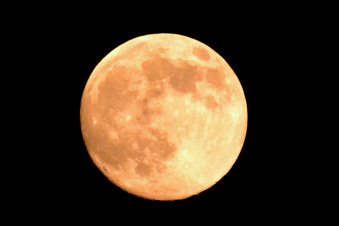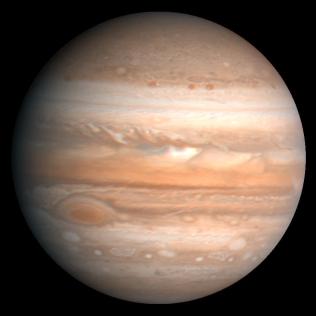Hi, everybody. I hope you’ve been having a good week and that you survived the demonic onslaught of trick-or-treaters Tuesday night! I was scared out of my wits – but then again I was caught several times in the front yard looking at the Andromeda Galaxy when a couple costumed kids would sneak up on me.
There’s several things happening this week, so let’s jump right in. As you probably know I’m interested in the science of astronomy, but more importantly the aspects of amateur astronomy that help set time and place by watching the stars, so often my interest is in movement and long-term events.
First off, check your clocks. For most of North America, you should have set them back an hour last night, but also like most of North America, you’re having to adjust several this morning. Nights are getting longer (as I mentioned last week, I’m down to less than 10:30 of sun-up time per day), and now sunset happens really early. At least we’ll have good stargazing!
 We’ve missed it now (it was just after midnight on Saturday morning), but I hope you enjoyed the full Beaver Moon (time to get those pelts!), or alternatively the Frost Moon. I noticed it very big on the eastern horizon Thursday night – and you may have noticed that it was also very high. As we slip toward the winter solstice, our night sky (in the northern hemisphere) is slanted more and more toward the ecliptic, pushing the Moon and planets higher into the sky, and the Sun lower in the daytime. This tilt is what causes “winter”!
We’ve missed it now (it was just after midnight on Saturday morning), but I hope you enjoyed the full Beaver Moon (time to get those pelts!), or alternatively the Frost Moon. I noticed it very big on the eastern horizon Thursday night – and you may have noticed that it was also very high. As we slip toward the winter solstice, our night sky (in the northern hemisphere) is slanted more and more toward the ecliptic, pushing the Moon and planets higher into the sky, and the Sun lower in the daytime. This tilt is what causes “winter”!
Sunday (tonight), the Moon will occult the bright red giant Aldebaran in the early evening – if you live in the eastern 2/3 of North America or in northern Europe. Hard to believe we’re already back around to seeing Taurus in the evening sky – but that’s what’ll happen over the course of a year! The Moon will be big and bright, just barely waning gibbous – so the star disappears behind a bright Moon, and reappears from behind a dark sliver an hour later. Specific times for specific locations can be found here. Remember that the times published here are in Greenwich Mean (Universal) time, and that this will happen AFTER you set your clocks back an hour — so Eastern Standard is Universal -5 hours, Central is Universal -6 hours, etc.
We’re also still in the middle of the Southern Taurids meteor shower. Like the Orionids were, this is a diffuse “sprinkle” of meteors that keep going for days – unfortunately the bright Moon will make it hard to see the peak, but you might still catch a few radiating from Taurus. There are a few more showers in the next few weeks as well, so don’t give up.
 On the planetary front, Uranus is still hanging out in Pisces, and will be for a while. Saturn is slipping away from the night sky, headed towards our evening sunsets. But Jupiter is making a surprise comeback – as we’ve zipped around in our orbit, we’ve “caught up” to Jupiter. Once lost in the glare of the Sun, we’re now able to see it on the morning side of the Sun – by this time next weekend (Nov 11, 12), Jupiter and Venus will be pairing up in the morning sky. Jupiter is the low one, slowly creeping higher night over night as we overtake it, while Venus, inside our orbit, is running away and diving behind the Sun. On the 13th, they line up and swap places. Mars, meanwhile, continues to hang out above them both in the morning sky – and will be slowly brightening again as we catch up to it.
On the planetary front, Uranus is still hanging out in Pisces, and will be for a while. Saturn is slipping away from the night sky, headed towards our evening sunsets. But Jupiter is making a surprise comeback – as we’ve zipped around in our orbit, we’ve “caught up” to Jupiter. Once lost in the glare of the Sun, we’re now able to see it on the morning side of the Sun – by this time next weekend (Nov 11, 12), Jupiter and Venus will be pairing up in the morning sky. Jupiter is the low one, slowly creeping higher night over night as we overtake it, while Venus, inside our orbit, is running away and diving behind the Sun. On the 13th, they line up and swap places. Mars, meanwhile, continues to hang out above them both in the morning sky – and will be slowly brightening again as we catch up to it.
Finally, a possible teaser – we might have another binocular comet on the way. Comet Heinze (C/2017 T1) was discovered in October by using a big pair of telescopes in Hawaii (on Mauna Loa and Haleakela), as part of a project looking for near-Earth asteroids. Right now, Heinze is a tiny, really dim speck, but it’s headed for an Earth fly-by in the next few months, passing at about 33 million km. We’ll keep watching, but Heinze might become bright enough to hunt with binoculars or a long-exposure photo. Stay tuned!
Get Out There
Troy
flying-squirrel.org





